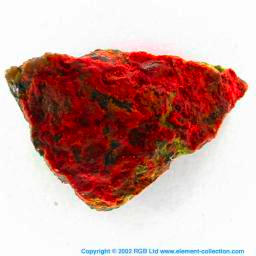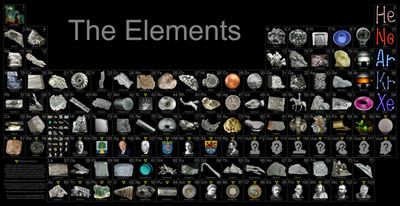|
|
|
|
|
|
|
|
|
|
|
|
|
|
|
|
Astatine, francium, actinium, and protactinium are irritating to element collectors. It's customary to say that all the elements up to uranium (92) are the "naturally occurring" elements, while those beyond 92 are man-made. Collecting all the man-made elements is of course impossible, since there's an open-ended number of them of increasingly short half-life. So people like to define a "complete" element collection as one containing all the elements up to uranium.
The problem is that astatine, francium, actinium, and protactinium are absolutely impossible to collect in any meaningful sense of the word. They are so fantastically radioactive and short-lived that if you had a visible quantity of any of them, you would be dead and then it would vanish before your body was cold.
Radon is a bit like this too, but not nearly as bad: You can have a glass vial with a macroscopic quantity in it. (Of course, it's an invisible gas, so you can't actually see it.) Technetium is theoretically collectable: One isotope has a very long half-life (but good luck actually getting any).
But astatine, francium, actinium, and protactinium are in a whole other league of non-collectability.
The customary solution is to take a chunk of uranium ore and explain that there's probably a few atoms of the elements somewhere in it at any given time. Uranium ore is better than refined, purified uranium, because the elements are generated several steps down in the highly complex decay chain of uranium. The ore has an equilibrium concentration of these daughter products that took many thousands of years to build up.
|
|
| |
|
|
|
|
|
Uranium ore (inside a Revigator).
My Revigator, which contains quite a bit of carnotite uranium ore, probably has more astatine, francium, actinium, and protactinium in it than my depleted uranium metal samples, even though they have far more uranium in them. Look under uranium for a more detailed explanation about what a Revigator is.
Source: eBay seller bettyboop
Contributor: Theodore Gray
Acquired: 13 November, 2002
Price: $90
Size: 12"
Purity: <0.1%
|
|
|
|
|
|
|
Sample from the RGB Set.
The Red Green and Blue company in England sells a very nice element collection in several versions. Max Whitby, the director of the company, very kindly donated a complete set to the periodic table table.
To learn more about the set you can visit my page about element collecting for a general description or the company's website which includes many photographs and pricing details. I have two photographs of each sample from the set: One taken by me and one from the company. You can see photographs of all the samples displayed in a periodic table format: my pictures or their pictures. Or you can see both side-by-side with bigger pictures in numerical order.
The picture on the left was taken by me. Here is the company's version (there is some variation between sets, so the pictures sometimes show different variations of the samples):

Source: Max Whitby of RGB
Contributor: Max Whitby of RGB
Acquired: 25 January, 2003
Text Updated: 11 August, 2007
Price: Donated
Size: 0.2"
Purity: <0.2%
|
|
|
|
|
|
|
Sample from the Everest Set.
Up until the early 1990's a company in Russia sold a periodic table collection with element samples. At some point their American distributor sold off the remaining stock to a man who is now selling them on eBay. The samples (except gases) weigh about 0.25 grams each, and the whole set comes in a very nice wooden box with a printed periodic table in the lid.
Radioactive elements like this one are represented in this particular set by a non-radioactive dummy powder, which doesn't look anything like the real element. (In this case a sample of the pure element isn't really practical anyway.)
To learn more about the set you can visit my page about element collecting for a general description and information about how to buy one, or you can see photographs of all the samples from the set displayed on my website in a periodic table layout or with bigger pictures in numerical order.
Source: Rob Accurso
Contributor: Rob Accurso
Acquired: 7 February, 2003
Text Updated: 18 January, 2009
Price: Donated
Size: 0.2"
Purity: 0%
|
|
|
|
|
|
|
  Poster sample. Poster sample.
This mineral, Vicanite, appears in my Photographic Periodic Table Poster representing actinium, because this highly unstable element can't reasonably be photographed. The rock probably contains on the order of a few atoms of actinium at any one time, as part of the complex decay chain of the thorium that makes up a much larger fraction of the sample. In no meaningful way is actinium itself visible in the sample, but sadly that's about the best you can do with an element like this. The sample photograph includes text exactly as it appears in the poster, which you are encouraged to buy a copy of.

Source: eBay seller ley646
Contributor: Jim Markitell
Acquired: 20 September, 2005
Text Updated: 4 May, 2007
Price: $15.50
Size: 0.5"
Purity: 0%
|
|
|
|
|
|
|
|
|
|
|
|
|
|
|